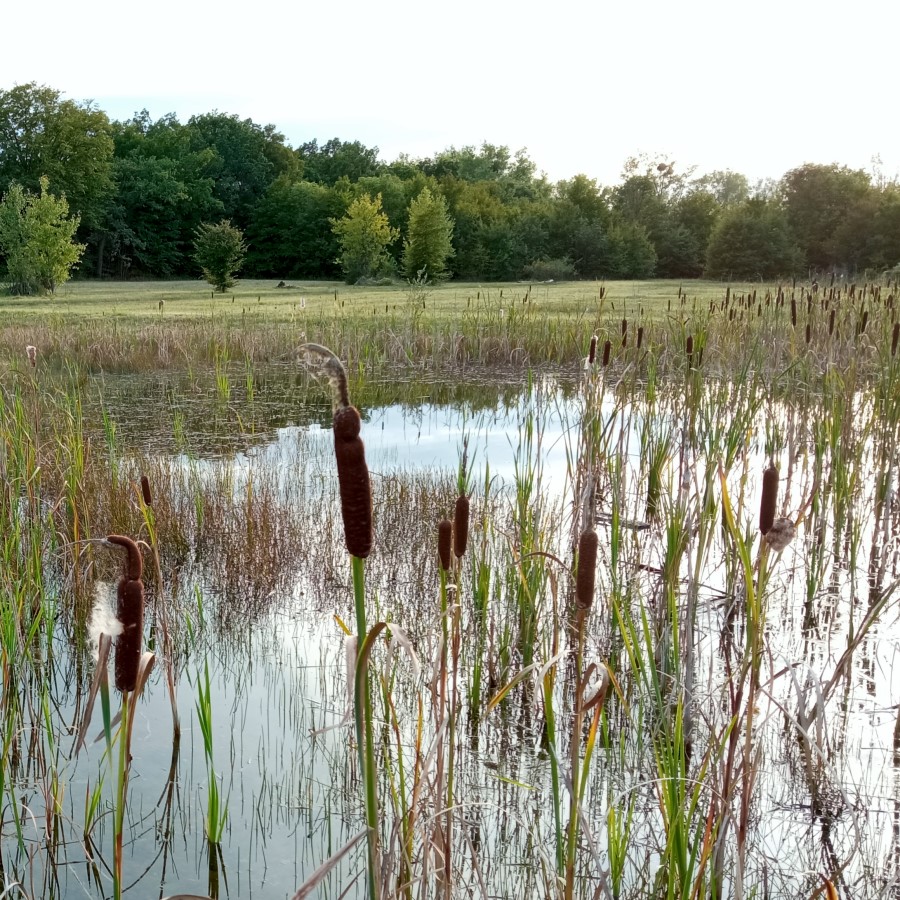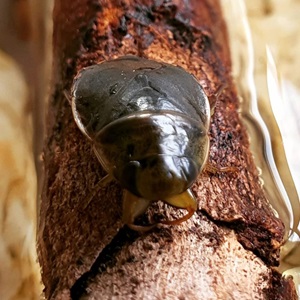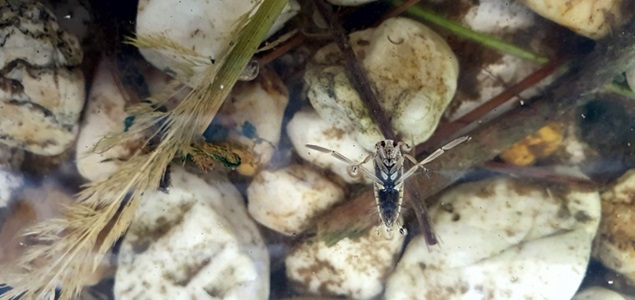True water bugs use their highly specialized mouthparts to inject venom into their prey. Different species are known to co-exist in the same habitat and a new study in Proceedings B examined the impact of their ecological niche on venom composition. Co-author Maike Laura Fischer from the Max-Planck-Institute for Chemical Ecology in Jena, Germany, tells us more about the study.

Summary of the paper
Still waters run deep - and are home to a variety of diverse animals including fish, frogs, spiders and insects. Although these animals all share the same habitat, they occupy different ecological niches to escape competition for food and shelter, and to avoid predator attacks. Common inhabitants of freshwater ponds include true water bugs, which are easily recognized by their piercing-sucking mouthparts and infamous for their painful stings. They use their venomous saliva not only to deter predators, but primarily to overwhelm and predigest prey animals. But do water bugs adapt their venom protein composition to the conditions of their ecological niche?

To address this question, we used a combined proteotranscriptomic approach to analyse and compare the venom composition of four different water bug species commonly co-occurring in freshwater ponds in Europe. In addition, we used venom gland extracts to perform bioactivity assays on different substrates and determine the cytotoxic and digestive activity of the venoms. Our findings in a nutshell: the venom composition and activity differed considerably between species. We identified proteins that probably represent species-specific adaptations to vertebrate feeding, plant feeding, prey overwhelming and predator deterrence. In particular, the repertoire of digestive enzymes differed considerably between zoophagous and phytophagous species, allowing optimal adaptation to their respective diet. Moreover, we found evidence that salivary amylases from predatory and herbivorous species can degrade both glycogen and starch, and are therefore beneficial to both feeding styles. This indicates that activity shifts or expansions of salivary enzymes play an important role in adaptation to ecological niches.
Our study shows that the ecological niche shapes the composition and activity of venom in true water bugs. But can the ecology of a true bug species be inferred from salivary protein composition alone? For this, further studies covering a broad range of different families, habitats and diets are needed. Moreover, the function and mode of action of many compounds in true bug venoms remain to be characterised to fully unravel the ecology and evolution of venom use.
How did the idea of the paper come about?
The idea for this paper arose from the fact that predatory true bugs have been largely neglected in venom research. Water bugs are very diverse and abundant throughout Europe, making them an excellent model for studying the ecology and evolution of venom use in true bugs.

About the authors
Maike Laura Fischer is a PhD student at the Max-Planck-Institute for Chemical Ecology in Jena (Germany). She studies the ecology and evolution of venom use in insects, under the supervision of Heiko Vogel and Andreas Vilcinskas. In particular, she aims at identifying and characterising key venom compounds that enable insect adaptation to specific ecological niches.
Sol Andrea Yepes Vivas is a PhD student at the Max-Planck-Institute for Chemical Ecology and studies intraspecific chemodiversity in black poplar. She did her master’s project with Maike Fischer and Heiko Vogel, studying venom activity in aquatic bugs.
Dr. Natalie Wielsch was part of the Research Group Mass Spectrometry/Proteomics at the Max-Planck-Institute for Chemical Ecology and performed LC-MS/MS experiments for this study.
Dr. Roy Kirsch is a postdoctoral researcher at the Max-Planck-Institute for Chemical Ecology studying the insect digestive system. He is specifically interested in the evolution and ecology of plant cell wall degrading enzymes in insects.
Prof. Dr. Andreas Vilcinskas is Professor for Applied Entomology at the Justus-Liebig-University Giessen (Germany) and head of the Animal Venomics project at the LOEWE Centre for Translational Biodiversity Genomics. In particular, he is interested in identifying bioactive molecules from insects with potential applications in medicine, agriculture and biotechnology.
Dr. Heiko Vogel is group leader at the Max-Planck-Institute for Chemical Ecology. He studies multitrophic interactions between insects, plants and microbes and is particularly interested in how insects cope with challenging environments and adapt to specific ecological niches. Together with Andreas Vilcinskas, he initiated and led this project to study the ecology and evolution of venom use in aquatic true bugs.
Tell us about your publishing experience in Proceedings B
Overall, it was a very positive experience to publish with Proceedings B. Manuscript handling and processing was fast and well organised, and the constructive feedback from the editor and reviewers helped us a lot to improve our work.
Proceedings B is looking to publish more high-quality research articles and reviews in animal behaviour. If you have an idea for a review, we strongly encourage you to submit a proposal by completing our proposal template and sending it to the journal. More information about the journal and the submission process can be found on our website.
---------------------------------------------------------------------------------------
Image credits:
Habitat: Maike Fischer
Ilyocoris_cimicoides and Notonecta glauca: Sol Andrea Yepes Vivas





